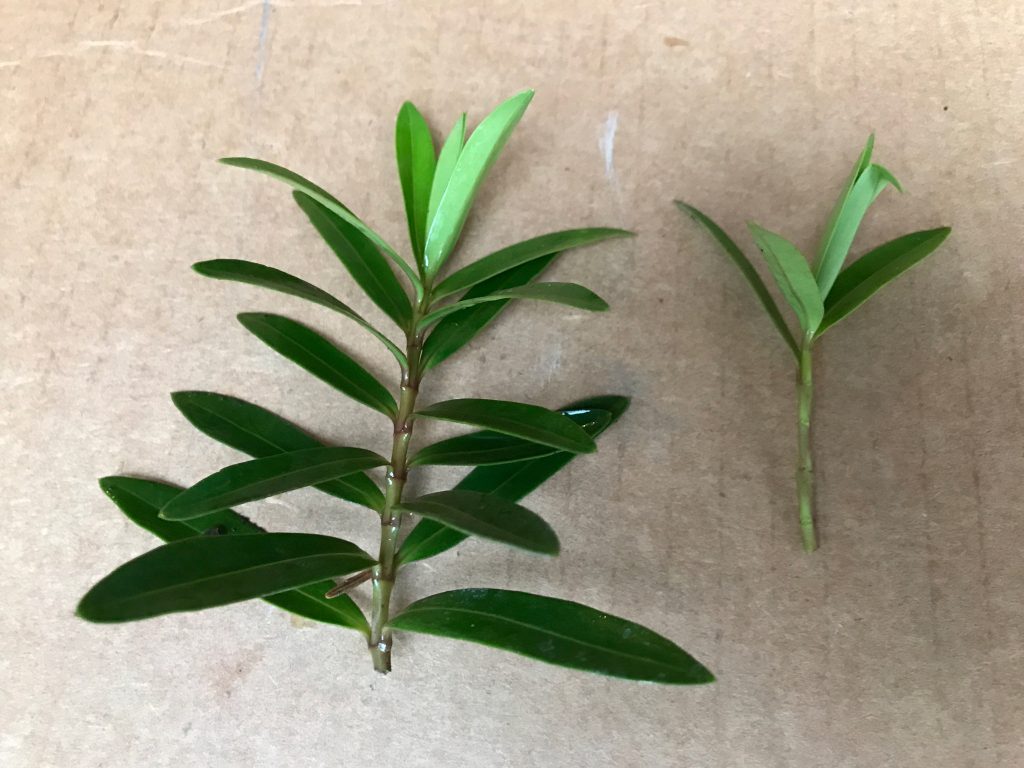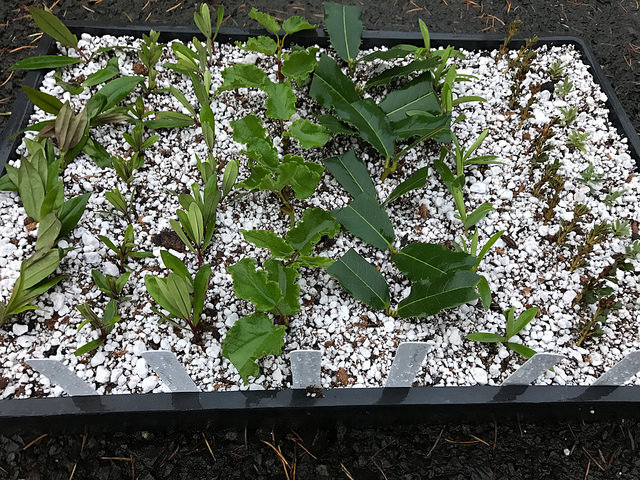CORVALLIS, Ore. – Snipping some cuttings from the garden will produce your own private nursery of plants by spring.
Whether you plant the results of your “snip and stick” project or give them away, propagating by cuttings can be a rewarding process.
Although some sources of information can be intimidating, Neil Bell, a horticulturist for Oregon State University Extension Service, has good news.
“I do lots of them at home,” he said. “I don’t use a greenhouse or even bottom heat. What that means is that the average gardener can propagate their own plants with nothing more than a tray, a decent medium, a bit of rooting hormone and a place to keep them out of the way.”
Greenhouses are advantageous, but not necessary. Using bottom heat can help as well if you’ve got room in the house to set up a system. But Bell keeps his trays of cuttings outside in a sheltered area and has reasonable success.
Not all cuttings will “take” and produce roots, he said, but enough will to make it worth the attempt. Up to 100 to 125 cuttings can fit in one tray so, if you’ve never propagated by cuttings, try one or two trays and you’re bound to get some plants out of your efforts.
“There’s no need to complicate it,” he said. “Even if you end up with 10 percent rooting, you’ve succeeded and most of the time you can do far better.”
This list of possible plants to propagate from hardwood cuttings in October and November is long, but some common ones include rosemary, rhododendron, hydrangeas, flowering currant (Ribes), Oregon grape (Mahonia aquifolium), mock orange (Philadelphus), redtwig dogwood (Cornus sericea), rock rose (Cistus), manzanita (Arctostaphylos), Hebe, Cotoneaster, barberry (Berberis) and Pyracantha. If you grow half-hardy shrubs like salvia, cuttings taken now are great assurance against winter injury.
Bell’s recommendations for taking hardwood cuttings:
- You’ll need: clean small clippers (the sharper the better), clean 3- to 4-inch deep tray, rooting hormone, tight-fitting gloves to protect hands against prickles and hormone, and a soilless mixture of 80 percent perlite and 20 percent peat moss. If you’ve used the tray before, wash with soap and water or a mild bleach solution and let them dry thoroughly.
- Start with a healthy plant. Those stressed by disease, pests or drought will have a high failure rate.
- Fill tray with perlite-peat moss mixture.
- The easiest cuttings to take are shoot tips from strong-growing twigs. Cut the twig about 3 to 4 inches long, which will leave a cutting with at least a couple of nodes (where the leaves and buds attach to the stem). With deciduous cuttings, make sure to keep track of the top and bottom of the cutting: buds on the shoot always point to the tip. If you can’t tell which side is up, cut the tip at an angle and the bottom straight.
- Bundle them up and take them to your workstation. Remove bottom foliage from the cutting, leaving two leaves or leaf buds at the top. If they have berries or fruit, remove those, too. Be careful not to tear the bark. If the plant is evergreen and has large leaves like a rhododendron, cut off half of each leaf.
- Snip off a bit from the bottom of the stem to refresh the cut. Dip the bottom end of the stem in rooting hormone and stick in the the tray 1/2 to 1 inch apart. Press “soil” around the cutting.
- Apply water so that the mixture is thoroughly moist but not sopping wet.
- Place in a sheltered spot where the cuttings get the most shelter you can provide.
- If it doesn’t rain or the cuttings are under an eave, keep them watered.
- When the forecast predicts freezing weather, bring the trays inside. Put them out as soon as the temperature comes back above 32 degrees.
- Don’t worry if leaves start to fall off; it’s natural. But clean them out of the tray to keep them from rotting and causing disease.
- In late March or early April, tug on a couple of the cuttings. If they don’t budge, they’ve rooted. If so, transplant them into 4- or 6-inch pot, depending on the size of cutting. If more roots have grown than will fit in the pot, don’t be afraid to trim them.


